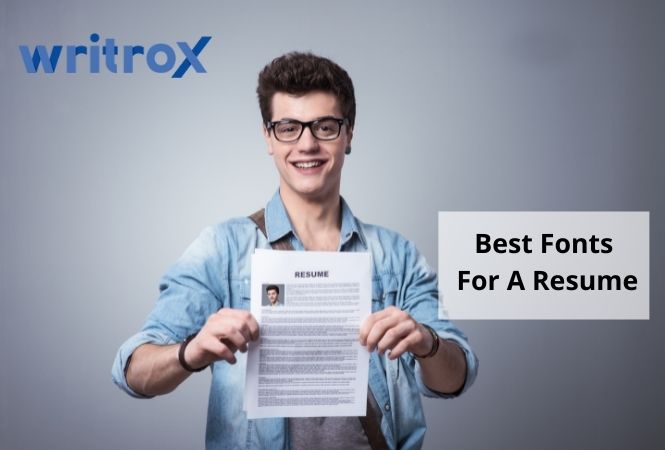Resume Guide 2025: An In-Depth Cover Letter Writing Guide
What is a cover letter for a job? What is a cover letter for a job? Before getting into the details of drafting a cover letter, understand what it is. A cover letter is a singular document of one-page length. The job seeker has to send a cover letter alongside a resume. A single cover letter is of no use without a resume to support it. The utility of the cover letter is to introduce yourself to the employer or hiring manager. In the letter, you include a brief overview of your professional skills, personal skill, work history, and capabilities. It also explains why you are suitable for the job role and why they should hire you. Resume and cover letter: The main difference Resume and cover letter: The main difference A resume is a document that presents the skills, degrees, qualifications, and achievements that make you suitable for the job role. In contrast, a cover letter is almost a written version of an introduction a jobseeker gives in front of the interview board. Here, you express your capability in simple words and present logic that support your suitability for the applied job role. It ends with a compelling CTA making a profound impact on the reader to hire you for the job role. A cover letter without a resume to support the credibility of your statements is an incomplete job application. So, even if you send a cover letter, attaching a resume alongside is necessary. What are the four parts of a cover letter? What are the four parts of a cover letter? A Cover Letter Guide is incomplete unless it informs you of the different parts in the letter. A cover letter is not like the usual formal letters you wrote in school! It has distinct purposeful segments to convey your skills and candidature suitability. The four parts in a cover letter are- Cover Letter Guide Cover letter header: It includes contact information (name, phone number, email id). Cover letter intro: The introduction should be enthusiastic enough to push them to read the full letter. It also contains the hiring manager’s address and information. Cover letter body: This part expresses the significant points and qualifications that make you a perfect fit for the role. Do not treat the letter body as a resume and follow a narrative approach. Cover letter closing: Ending of the cover letter has to be compelling with a call-to-action and formal signature. Cover letter header: It includes contact information (name, phone number, email id). Cover letter intro: The introduction should be enthusiastic enough to push them to read the full letter. It also contains the hiring manager’s address and information. Cover letter body: This part expresses the significant points and qualifications that make you a perfect fit for the role. Do not treat the letter body as a resume and follow a narrative approach. Cover letter closing: Ending of the cover letter has to be compelling with a call-to-action and formal signature. How Important is a Cover Letter? How Important is a Cover Letter? A cover letter is as crucial as a resume in the case of a job application. While most people are aware of the importance of a resume, a cover letter is still insignificant for many jobseekers. The purpose of the cover letter is to bring instant attention to your resume. It compels the reader to read the CV attached with it. Include assertive statements in the letter in an organized cover letter layout. What are the 7 main things you should include in your cover letter? What are the 7 main things you should include in your cover letter? Writing a cover letter is not easy unless you have a suitable Cover Letter Guide. A wisely drafted cover letter can help you gain an edge over other job applicants. In contrast, a poorly written cover letter can generate a negative impression. The employer may not even read the resume if the cover letter is not compelling. Hence, knowing the essential things to include in the letter is necessary for you as a jobseeker. Cover Letter Guide A suitable template for cover letter – Before identifying what to include in a cover letter, you must select a suitable template. Several cover letter templates are available in the online space, but you have to find the right one. A nicely formatted and visually appealing template does the trick. A simple-looking template is the best choice for freshers and experienced professionals. A suitable template for cover letter A professional cover letter header – Write your name and contact information. You can also include your professional title and LinkedIn account link. Keep it professional and provide the correct contact information with a professional email username. A professional cover letter header – Write your name and contact information. You can also include your professional title and LinkedIn account link. Keep it professional and provide the correct contact information with a professional email username. A professional cover letter header – Start with a proper and formal greeting – Greet the hiring professional and maintain a professional tone. It is best to add the name of the hiring professional or employer to greet properly. However, if you do not know the name, write the designation. Do not write – “to whom it may concern”. Start with a proper and formal greeting – Greet the hiring professional and maintain a professional tone. It is best to add the name of the hiring professional or employer to greet properly. However, if you do not know the name, write the designation. Do not write – “to whom it may concern”. Start with a proper and formal greeting – Write the perfect opening paragraph – A catchy and enthusiastic opening line in a cover letter is crucial for making the reader interested in you. The first few sentences are the key factors in creating a positive impact. Write small sentences with a crisp message with a highlighted part covering your achievement. Write the perfect opening paragraph – A catchy and
Resume Guide 2025: An In-Depth Cover Letter Writing Guide Read More »












